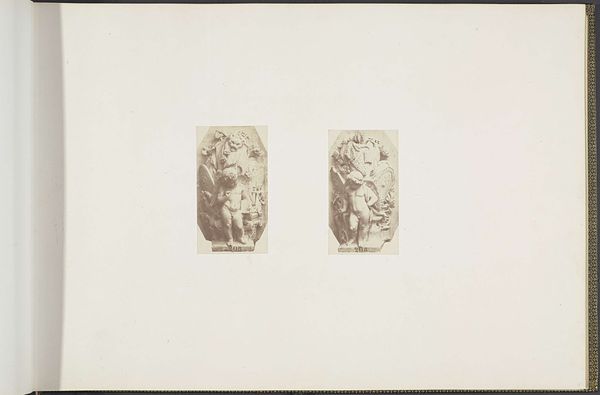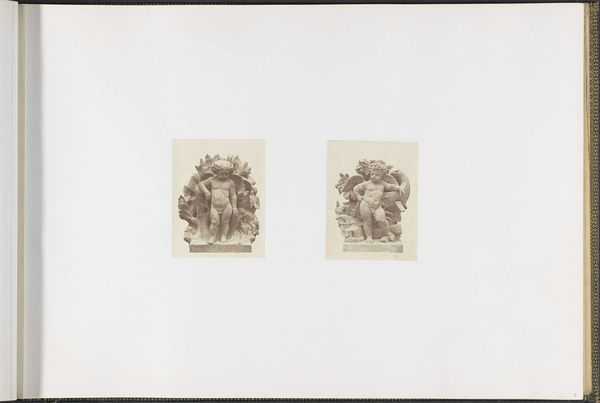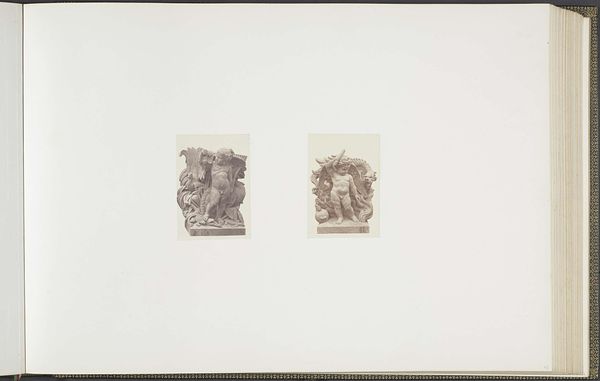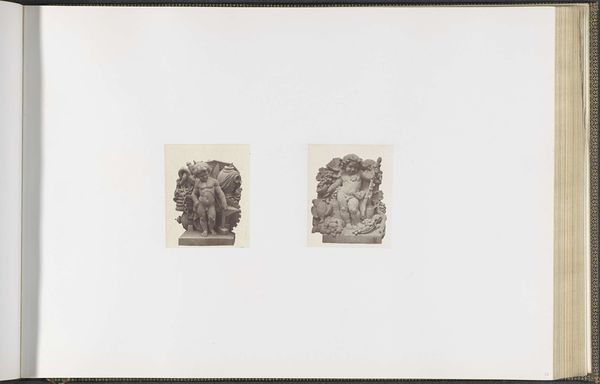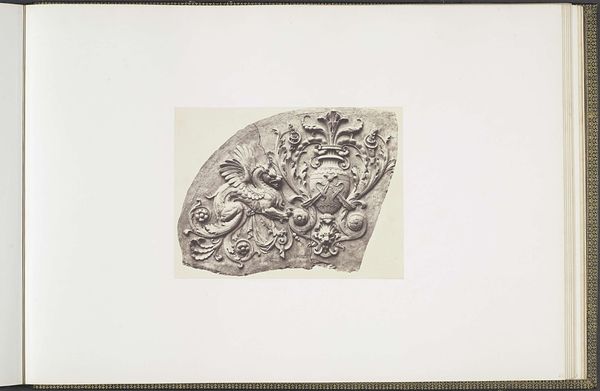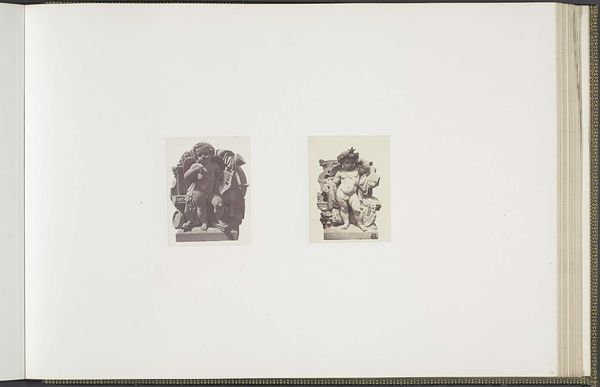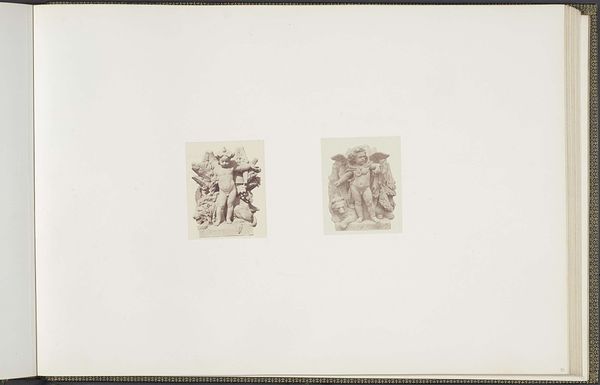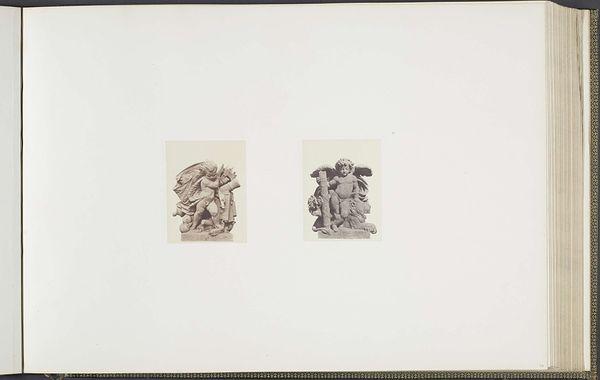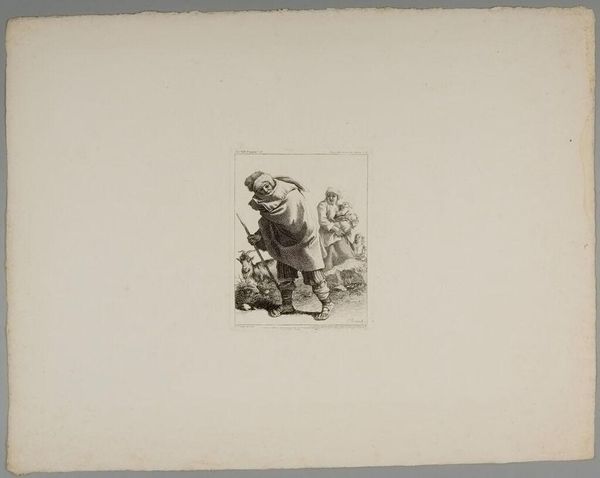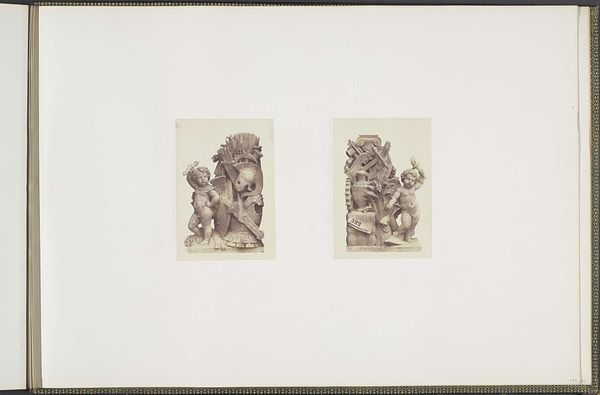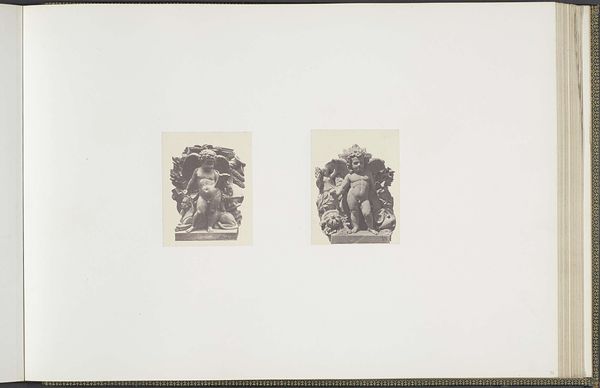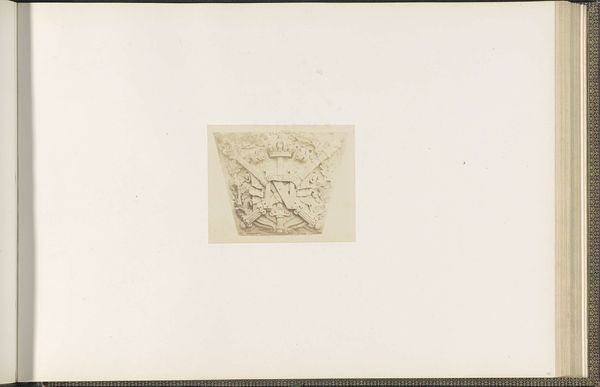
Gipsmodel voor beeldhouwwerk op zolderverdieping van het Pavillon Richelieu van het Palais du Louvre door Pierre Louis Rouillard c. 1855 - 1857
0:00
0:00
print, relief, photography, sculpture
#
portrait
# print
#
greek-and-roman-art
#
relief
#
classical-realism
#
photography
#
sculpture
Dimensions: height 378 mm, width 556 mm
Copyright: Rijks Museum: Open Domain
This photograph by Edouard Baldus captures Pierre Louis Rouillard's plaster model for a sculpture at the Louvre's Pavillon Richelieu. It brings up some interesting questions about art's public role in 19th-century France. Consider that the Louvre, initially a palace, was transformed into a public museum, reflecting changing attitudes about who art was for. This sculpture, intended for the museum's façade, embodies classical ideals that institutions like the École des Beaux-Arts promoted. France in this time had undergone revolution, empire and restoration, each leaving their mark on the nation’s art and architecture. A sculpture like this— neoclassical in style— was intended to project a sense of timelessness, even while the country was experiencing constant political change. To truly understand this image, we need to delve into the archives, exploring the Louvre’s history and the artists who shaped its identity. The meaning of art is always tied to its context, to the institutions and social forces that bring it into being.
Comments
No comments
Be the first to comment and join the conversation on the ultimate creative platform.
